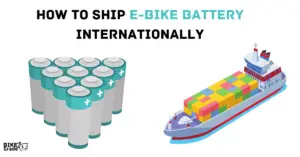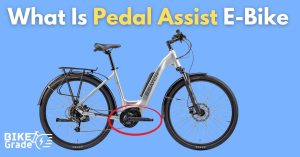Can You Ride An Ebike In The Rain? YES , Here is How
Yes, you can ride an electric bike in the rain. Ebikes are designed to be water-resistant and be able to withstand certain amounts of rain. While it is not recommended to ride an electric bike in heavy rain or thunderstorms, light or moderate rain should not be a problem.
Four points to consider when riding an electric bike in the rain:
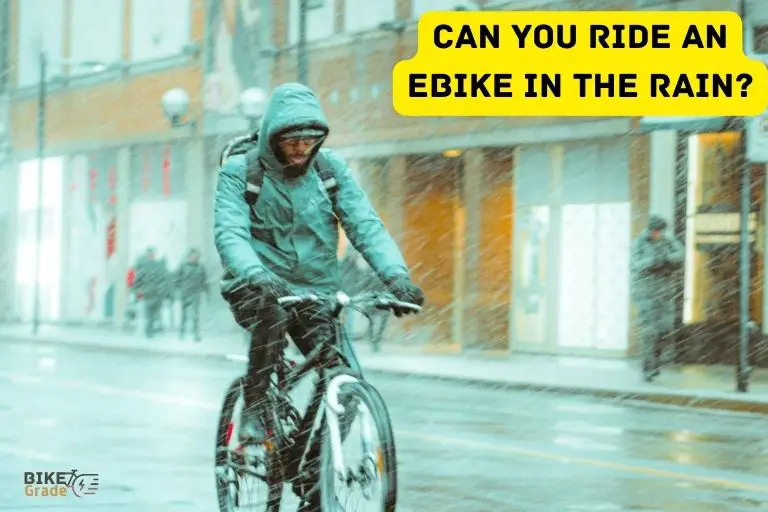
Riding an electric bike in the rain can provide a unique and fun experience. However, it is important to ensure you are taking the necessary precautions to ensure the safety of yourself and the bike.
So make sure to always wear the appropriate gear and to always obey the law to keep the ride safe and enjoyable.
A survey conducted by the Electric Bicycle Association found that more than 81% of electric bike riders said they felt comfortable riding their ebike in light rain.
bikegrade
Is it Safe to Ride an E-Bike in the Rain?
It is generally safe to ride an e-bike in the rain, however, it is important to take extra precautions and take a few additional steps to maintain safety.

The most important safety measure is to maintain a proper grip on the handlebars and keep the brakes dry. Additionally, it is important to choose an appropriate e-bike that is designed for wet conditions and is fitted with quality parts to prevent corrosion.
Other important safety measures include checking the battery and motor for water damage, avoiding deep puddles and slippery surfaces, monitoring tire pressure, and choosing a course terrain for added stability.
Can you ride an Ebike in the Rain? Wet weather tricks!
What Are the Risks of Riding an E-Bike in the Rain?
Riding an electric bike (e-bike) in the rain increases the potential for accidents or injury due to decreased visibility, slippery and wet surfaces, and the operation of electrical components in wet conditions.
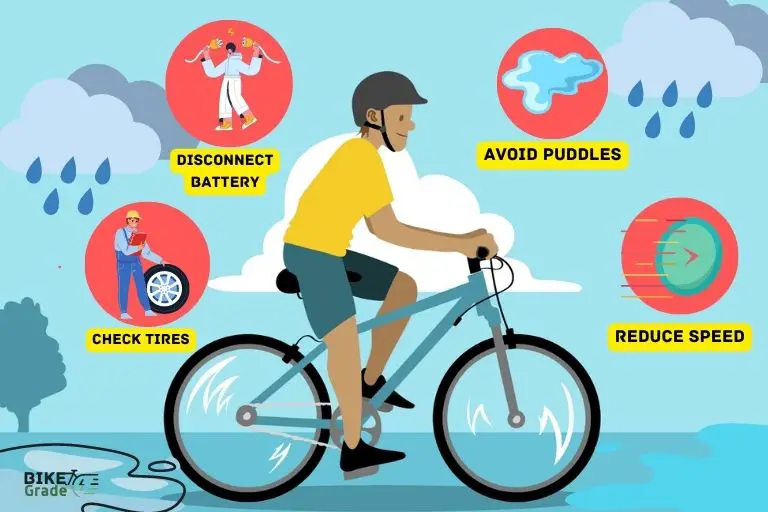
To mitigate potential risks while riding an e-bike in the rain, it is important to take the following safety precautions:
- Wear protective gear: Ensure you have proper visibility and protection in wet conditions, such as a raincoat, waterproof helmet, and waterproof outer layer.
- Reduce speed: Slippery road surfaces, the potential for rain-drenched electrical components, and decreased visibility demand lower speeds in wet conditions.
- Check tires: Tires with adequate treads suitable for wet surfaces and working brake systems will reduce the chances of skidding or sliding on wet roads.
- Slow down on turns: Slowing down while turning or stopping will prevent the loss of traction or control.
- Avoid high voltage: Avoid riding through puddles and in standing water, as this increases the risk of electric shock.
- Avoid puddles: Riding through puddles increases the potential for loss of control or traction.
- Avoid obstacles: In wet conditions, obstacles, such as potholes, fallen leaves, and gravel, can lead to sliding or skidding.
- Disconnect battery: If rain is heavy or continuous, disconnect the battery to prevent water ingress and corrosion.
How to Prepare and Ride an E-Bike in the Rain
Preparing and riding an e-bike in the rain can be done with the following steps:
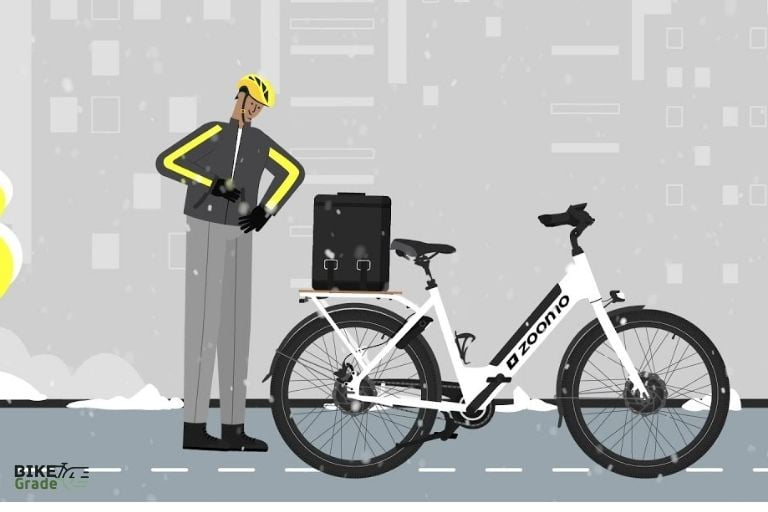
- Check the weather before heading out: Ideally, you should wait and plan trips when the rain has passed or is forecast to not be worse than light rain.
- Wear rain-resistant and waterproof clothing: Make sure that all the clothes you wear, including outerwear, are waterproof and breathable.
- Use mudguards and mud flaps: These can help protect your eyes and face from mud and water.
- Check your bike before riding: Ensure that all the components are working properly and that the tires are pumped up and fitted with the right level of tread.
- Use a low level of assistance: The wetter and slipperier the terrain, the lower the level of assistance should be.
- Avoid sudden braking: Anticipate your brake points and use only the front brakes, reducing the pressure gradually.
- Ride in the center of your lane: Ride in the central portion of the lane so that you can anticipate potential obstacles or slippery surfaces such as puddles or paint markings.
- Watch for puddles: Try to avoid puddles when riding in the rain to reduce the risk of hydroplaning.
- Dry your bike off after use: Once you get home, dry your bike with a towel and chain lube to protect the components from rust or corrosion.
What Safety Gear Should I Wear While Riding an E-Bike in the Rain?
It is essential to take additional safety precautions when riding an electric bike in the rain. To ensure the rider’s safety, the following items should be considered when riding an e-bike in wet conditions:
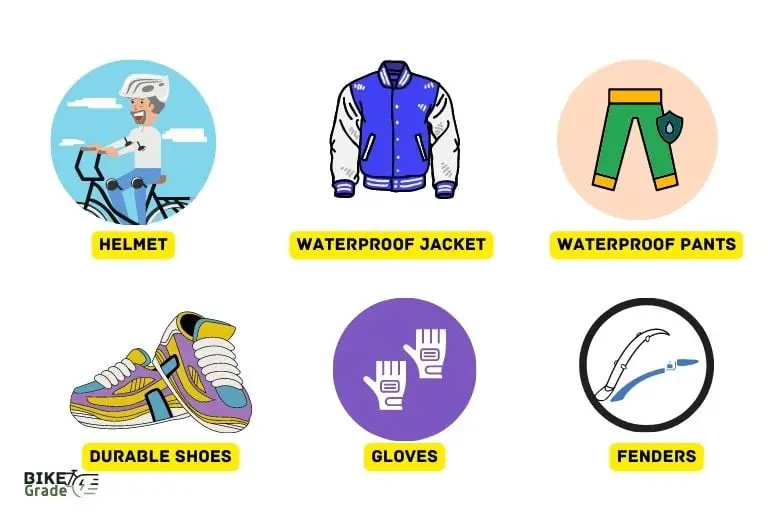
“The helmet isn’t just protection while riding, it’s also a shield against the rain”
– Kate Lemmon
What Maintenance Should I Do After Riding an E-Bike in the Rain?
Maintenance of an e-bike should be done regularly and following rainfall there are some additional considerations that must be taken into account. These include:
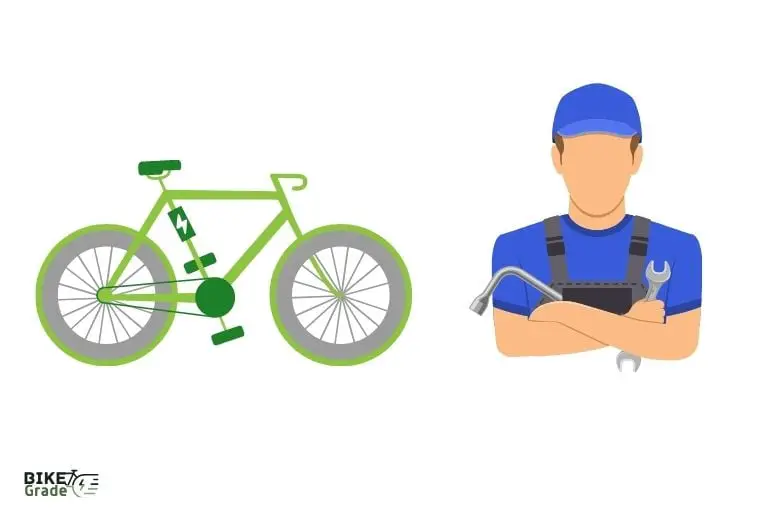
Carrying out the necessary maintenance after riding an e-bike in the rain will ensure that it remains safe and in good condition, as well as ensure that it is able to perform well and be more reliable in the future.
Does Riding an E-Bike in the Rain Affect Battery Life?
Yes, riding an e-bike in the rain can affect battery life due to the electrical components being exposed to water.
In addition to this, the increased airflow created by the motion of the bike can draw in moisture more quickly and damage the battery faster than in dry conditions.
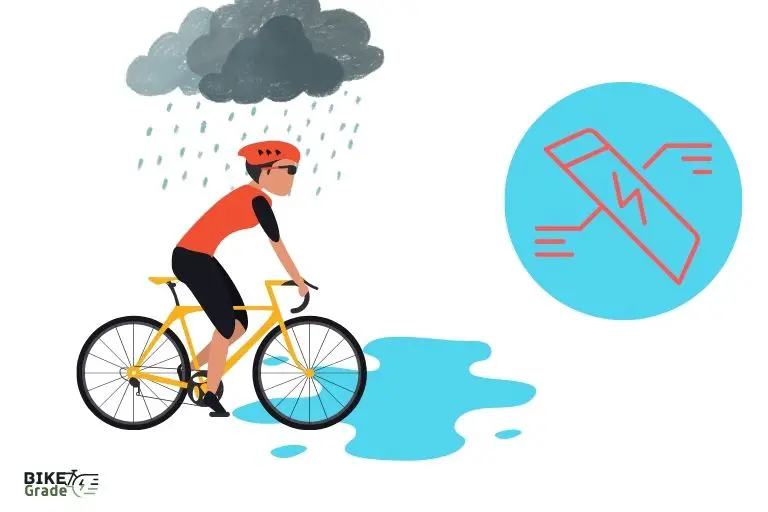
Some of the factors that can affect the battery life of an e-bike in the rain include:
Are E-Bikes Waterproof?
No, e-bikes are not waterproof. Most models are designed to be water-resistant so they can handle occasional rain, but submerging them in water can lead to irreparable damage.
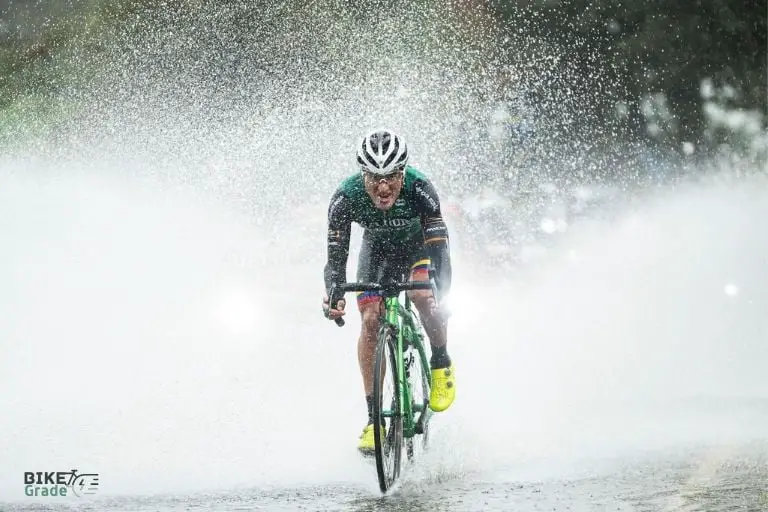
To ensure your e-bike remains in top condition, use a bike cover when not in use and keep it out of the rain.
It is also important to regularly inspect your e-bike for wear and tear, such as loose connections and cables, corroded hardware, and worn brakes and tires.
FAQ
Can I ride my ebike in the rain?
What precautions should I take before riding an ebike in the rain?
Are there any safety concerns about riding an ebike in the rain?
Conclusion:
Riding an electric bike in the rain is a feasible and enjoyable activity, so long as you take the necessary precautions to ensure your safety, such as wearing the right clothing and following the local laws and regulations. With the right precautions, e-bikes can be ridden in most moderate rain conditions.

